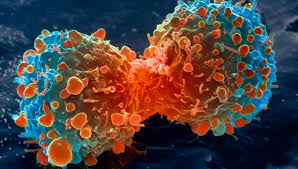Abstract:
In ‘Veterinary Homoeopathy’ rapid advancement has occurred and veterinary homoeopathic repertories are also being developed. The present article briefly discusses the background, development, and rationality of such veterinary homoeopathic repertories; the applicability of usual repertories used for humans; as well as the philosophical background, general plan of construction and further development of veterinary repertories. Some details of treatment of a cat using Kent’s Repertory as was reported in the 1990s in a foreign scientific forum is also given in brief.
INTRODUCTION:
The term ‘Veterinary Homoeopathy’ is generally applicable for use of homoeopathic therapeutic system for the treatment of animals. It is an established procedure and plenty of literature is available in which homoeopathic prescribers have shared their experiences. Rapid advancement has occurred in the past few decades. Not only is veterinary materia medica available but veterinary homoeopathic repertories are also being developed. The present article briefly discusses the background and academic aspects of such veterinary homoeopathic repertories and also points out certain aspects which will further enrich the content and quality of such repertories to be used in veterinary practice.
The article deals sequentially with the following aspects:
- Background and development of veterinary homoeopathy.
- Whether symptomatology from human proving can be applied for treatment of sick animals and whether human repertory can be utilised for animals.
- Logic for having separate repertory for veterinary homoeopathy.
- Philosophical background of veterinary repertory.
- General plan of construction of veterinary repertory.
- Further development of veterinary repertories.
Background and development of veterinary homoeopathy:
The earliest reference to use of homoeopathy for animals was around 1813 when Hahnemann himself lectured on the topic [1]. In later years there is mention of use of medicines on animals in the writings of Boenninghausen. [2]
There are several books written on treatment of different diseases in animals. Some are animal-specific (e.g. The Treatment of Cattle by Homoeopathy by MacLeod [3]) and some deal with different diseases in different animals (e.g. The Hand-book to Veterinary Homoeopathy by Rush [4]). The International Association for Veterinary Homoeopathy (IAVH) was founded in 1986. The organization stressed on production of veterinary materia medica and veterinary repertory. [1]
Whether symptomatology from human proving can be applied for treatment of sick animals and whether human repertory can be utilised for animals:
HBF Jervis (a veterinary surgeon who took to homoeopathy) can be quoted- “The animals, equally with the human subject, deserve the blessings that can be bestowed upon them by Homoeopathy” and the fact is that “…. it does work so well and accurately upon them”. [5] Christopher Day conducted a large number of on-farm tests in many species for a wide variety of clinical problems. Even though the groups were often too small to provide analyzable data, the vast majority indicated a positive result.” [6]
So it is evident that manifold clinical verifications of individualized treatment in animals applying homoeopathic principle give so many positive results. Those were done by utilizing information collected from humans. Indexing of proved symptoms first came into homoeopathic field to minimize the process of searching. Various clinically verified symptoms are obtained from human drug proving and are seen to occur in animals. So, human repertory may be applied in veterinary repertorisation but it has to avoid or ignore subjective symptoms which are strictly human.
[An illustration of successful management of problem in cat by using Kent’s repertory is given from Peter Mohr’s experiences accessed from Homoeopathic links, 1994.[7] It was a case of use of Belladonna through repertorisation: [7] Mohr wrote “From the beginning of my practice I watched this level with great awareness. After a while I realised I got quite a number of mind symptoms, especially in pet-cases. The problem then was to sort out which symptoms I could rely on and use in the repertorisation.”
Case Summary: Two years old male pet cat showed to some extant auto-aggressive behaviour from August 1991 and from May 1991. He started to bite his tail. After few weeks the tail was amputated without having any improvement. He was still biting it until there was bleeding. The following seven symptoms (converted into rubrics) were very minutely collected for repertorisation. [The page no. in Kent’s repertory is shown alongside.]
“FEAR; imaginary things (K. 45).
DELUSION; spectres, ghosts, spirits, sees (K. 32).
GROWLING, like a dog (K. 51).
BITING (K. 9).
BITING, night (K. 9).
RAGE; night (K. 70).
EYES; pupils, diluted (K. 263).”
In discussion portion Mohr told that- “I gave Belladonna 10M, and the cat has not shown this behaviour since……. During an inquiry in April 1993 I found that the symptoms have not reappeared. Sometimes the cat runs around the room, but he is not so afraid of strangers anymore.”]
Logic for having separate repertory for veterinary homoeopathy:
To form a repertory for animal, one can refer to the views of Richard H. Pitcairn who has compiled a list of justifiable questions regarding logically collecting the prescribing symptoms and thereby to form a veterinary homoeopathic repertory. [8]
One cannot ignore the basic information available in ‘human’ repertory. Marc Bauer, however, writes – “The aim of the Veterinary Repertory is to help the homoeopathic veterinarian. This is done in several ways, but always by adding information to the normal repertory. Thus, the basis of the Veterinary Repertory remains the normal human repertory and is not a separate entity!” [9]
Philosophical background of veterinary repertory:
So many repertories have been introduced in homoeopathic system in last 200 years with their different philosophical backgrounds. Some consider general to particular symptoms (viz. Kent’s, Synthetic, Synthesis, Complete repertory, etc.); some consider particular to general symptoms (viz. Boenninghausen Therapeutic Pocket Book, Boger-Boenninghausen’s Characteristics & Repertory, etc.) or purely clinical symptoms. But repertories for animals are not constructed on such type of definite background. The objective and pathological symptoms are most important for this purpose.
General plan of construction of veterinary repertory:
After studying all available veterinary repertories, it is seen that different repertories have been constructed on anatomical schema like many of the human repertories. But “Repertory of Veterinary Homeopathy” [10] by John Hoare is arranged system wise e.g. Cardio-vascular System; Digestive System etc.
Further development of veterinary repertories:
Veterinary homoeopathy is the fruit of practical application of human based proved homoeopathic medicine. The veterinary repertories are clinical collections. Till now the available repertories cover symptoms of all the animals as a whole i.e. general repertory. The species specific repertories (viz. repertory of cats/ dogs/ cows etc.) or disease specific repertories (viz. veterinary repertory of diarrhoea/ cough etc.) may come in future.
CONCLUSION
The veterinary physicians shall have to realise the necessity for developing veterinary repertories and to put in their best effort to prepare such repertories. Then the applicability of homoeopathic medicine in veterinary purpose will be strongly established and the effectiveness of homoeopathy in animals will be greatly enhanced.
References:
- Internet Source: (visited 06.04.2015)http://www.veterinaryhomeopathy.co.uk/homeopathy.html
- Bradford TL. Cures of Animals with High Potencies. In: The Lesser Writings of CMF von Boenninghausen. 10th New Delhi: B. Jain Publ, 2012.
- MacLeod G. The Treatment of Cattle by Homoeopathy. Reprint ed. New Delhi: Jain Publ Co., 1983.
- Rush J. The Hand-book to Veterinary Homoeopathy. 2nd New Delhi: IBBP.
- Jervis HBF. The superiority of homoeopathy in veterinary practice. Heal Thyself (Ed. Ellis Barker J). November, 1940; LXXV (899).
- Day C. Clinical trials and data. In: The Homoeopathic Treatment of Beef and Dairy Cattle. Germany: Narayana Verlag GmbH.
- Mohr P. Repertorisation of animal cases. Homoeopathic links. 1994.
- Internet Source: (visited 04.2015)http://hpathy.com/veterinaryhomeopathy/towardsaveterinaryrepertory
- Internet Source: (visited 09.04.2015)http://hpathy.com/homeopathyrepertory/thegenesisoftheveterinaryrepertory
- Hoare J. Repertory of Veterinary Homeopathy. Germany: NarayanaVerlag GmbH.
Authors:
Dr Sourindranath Paik, Dr Arindam Dutta and Dr D Basu





